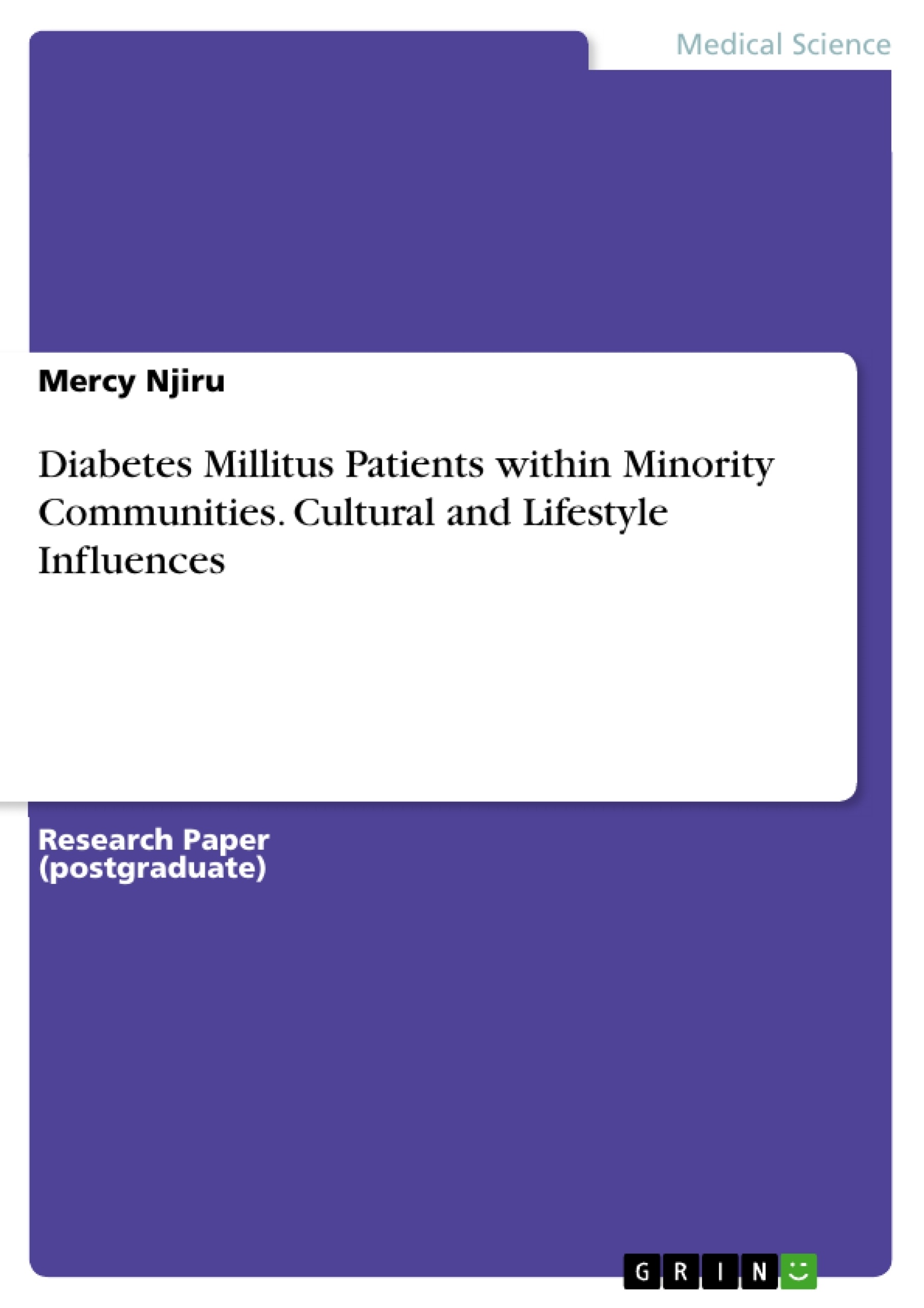The aim of this research is to find out the cultural and lifestyle influences on health of diabetes patients within minority communities. The number of individuals belonging to minority communities is the US is increasing, and most of these communities are more susceptible to diabetes mellitus than other but majority populations.
This could be because of genetic preference for diabetes mellitus and because of an unbalanced access to adequate healthcare. Therefore, understanding various cultural views is essential in providing healthcare for individuals in the minority communities within the US.
This paper achieves its objectives by examining 1) background research on the topic including statistics of diabetes mellitus among specific populations; 2) risk factors of diabetes mellitus amongst minority groups; 3) impact of cultural perceptions and lifestyle on diabetes mellitus care, and; 4) ways of reducing racial disparities in diabetes mellitus care. This proposed research ends with conclusions and recommendations on the topic.
Inhaltsverzeichnis (Table of Contents)
- Abstract
- Introduction
- Problem Statement
- Literature Review
- Statistics
- Risk Factors of Diabetes Mellitus amongst Minority Groups
- Impact of Cultural Perceptions and Lifestyle on Diabetes Mellitus Care
- Reducing Racial Disparities in Diabetes Mellitus Care
- Research Question
- Methodology
- Study Population
- Data Collection
- Ethical Considerations
- Proposed Data Analysis Method and Presentation
- Expected Results
- Discussion of Findings in Relation To Literature
- Conclusion and Recommendations
Zielsetzung und Themenschwerpunkte (Objectives and Key Themes)
This research aims to investigate the influence of cultural and lifestyle factors on the prevalence of diabetes mellitus in minority communities within the United States. The study will examine the impact of cultural perceptions and beliefs, access to healthcare, and lifestyle choices on the health outcomes of diabetes patients from minority groups. The findings will contribute to the development of evidence-based practices for diabetes management and prevention in minority communities.
- Cultural and lifestyle influences on diabetes prevalence in minority communities
- Disparities in diabetes care among minority groups
- Impact of cultural perceptions on healthcare access and utilization
- Strategies for reducing racial disparities in diabetes care
- Development of culturally sensitive interventions for diabetes management
Zusammenfassung der Kapitel (Chapter Summaries)
- Abstract: This research aims to understand the cultural and lifestyle influences on diabetes prevalence in minority communities by analyzing statistics, risk factors, cultural impacts, and strategies for reducing racial disparities.
- Introduction: Diabetes mellitus (DM) disproportionately affects minority communities in the US, with higher rates of complications and mortality compared to the White majority. Cultural barriers and access to healthcare contribute to these disparities.
- Problem Statement: Limited research focuses on minority communities and diabetes. The lack of awareness about diabetes and its management among minority groups contributes to its rising prevalence, highlighting the need for interventions.
- Literature Review: This chapter examines statistics on diabetes prevalence in minority communities, particularly Hispanic/Latino and African-American populations, highlighting the higher rates of diabetes and complications compared to non-Hispanic Whites.
- Methodology: This chapter outlines the research methodology, including the study population, data collection methods, ethical considerations, data analysis techniques, and expected results.
Schlüsselwörter (Keywords)
The key focus of this research is on diabetes mellitus, cultural influences, minority health, racial disparities, healthcare access, and lifestyle choices. The study seeks to develop evidence-based practices for diabetes management and prevention in diverse communities.
- Citation du texte
- Mercy Njiru (Auteur), 2014, Diabetes Millitus Patients within Minority Communities. Cultural and Lifestyle Influences, Munich, GRIN Verlag, https://www.grin.com/document/314821



